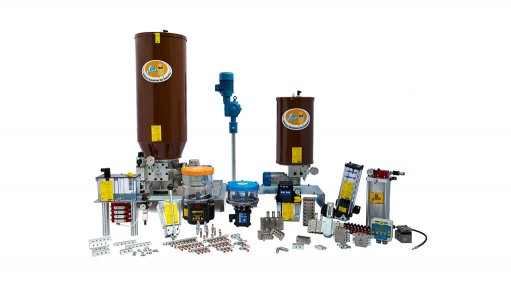
COMPREHENSIVE LUBRICATION SYSTEMS Centralised lubrication systems ensure that there is no need to be concerned about a lubrication point being under- or overlubricated
Automated and centralised lubrication control platforms are essential for any type of machine, as they ensure efficient lubricant consumption and application, says Randburg-based lubrication systems company Control Lubrication Systems.
“Centralised lubrication systems ensure that there is no need to be concerned about a lubrication point being under- or over- lubricated, which results in waste,” says Control Lubrication Systems member Sean Dillon, who further explains that such a system delivers the correct amount of lubricant to lubrication points. “This reduces lubricant consumption and machine wear and tear that will, in turn, save the client money in terms of lubricant consumption, machine maintenance and downtime.”
To determine application-specific requirements, a technician from Control Lubrication Systems assesses a client’s machinery, or the technical drawings of the machine, to determine the requisite frequency of lubrication application, as well as which products are ideally suited to the task.
The technician will also determine the distance from the pump to the distribution blocks, and from the distribution blocks to the lubrication points, to calculate the correct size of tubing that would be required.
Comprehensive Systems
The main components of comprehensive lubrication systems are a grease or oil pump, a distribution block and a control panel.
Lubrication pumps are available in a variety of models, including electrically, pneumatically, hydraulically and manually operated pumps.
The pumps deliver the lubricant to the distribution block through tubes. The distribution block then delivers a fixed amount of lubricant to the lubrication point and the control panel adjusts the frequency of application and monitors lubricant levels, as well as system irregularities, such as broken or leaking pipes and blockages.
Lubricant levels are automatically monitored by the system. “The control panel will monitor a low-level switch, mounted on the reservoir of the lubrication pump. The switch, in turn, activates a visual signal when the lubricant is running low,” explains Dillon.
The control panel will also monitor a proximity or pressure switch, mounted on the distribution block. Should a signal not be received in a set alarm time, an alarm light will flash on the control panel and the screen will indicate the system error to inform the operator.
Should a fault occur, the control panel has an output signal that can activate a light to flash, a siren to sound or a system shutdown to prevent damage.
Most lubrication pumps supplied by Control Lubrication Systems are supplied with a refill filter and/or grease strainer to remove contaminants. However, Dillon advises clients to fit an additional filter and/or grease strainer to the outlet of the lubrication pump.
Reliable Service Provision
“Centralised lubrication systems can continue operating hassle-free for several years, as long as clean lubricant is used,” says Dillon, adding that 90% of system breakdowns are the result of a contaminated lubricant.
He advises clients to ensure that lubricant containers are correctly and adequately sealed.
“By doing these simple inspections, the lubrication system will keep the machine running smoothly,” concludes Dillon.